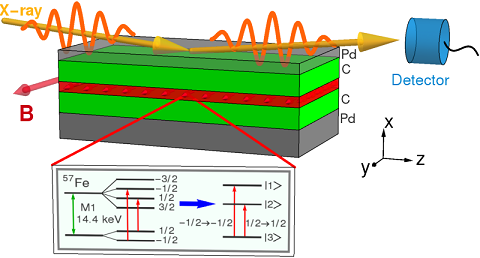
Biography
Biography: Adriana Palffy
Abstract
Recent years have witnessed the commissioning of coherent x-ray sources opening the new field of x-ray quantum optics. While not yet as advanced as its optical counterpart, it may enable coherent control of x-rays, with potential applications for the fields of metrology, material science, quantum information, biology and chemistry. Compared to optical photons, x-rays profit from better detection, robustness, high penetrability and, due to their shorter wavelength, focussability, pushing the diffraction limit far beyond present-day limitations. These advantages bring into focus x-rays for promising applications for instance as future information carriers, or for novel probing technologies based on quantum effects. Due to their suitable transition energies, nuclei rise as candidates for the resonant interaction with coherent x-ray light. Here, we investigate how to use nuclear transitions in the x-ray regime to manipulate single x-ray quanta. The key for such control is the use of Mossbauer transitions in solid-state targets which enable collective effects to come into play in the nuclear excitation and decay processes. Particularly successful systems to exploit collective effects of nuclei in x-ray single-photon superradiance have proved to be thin-film planar x-ray cavities with an embedded 57Fe nuclear layer. For instance, we have shown that narrow-band x-ray pulses can be mapped and stored as nuclear coherence in a thin-film planar x-ray cavity with an embedded iron layer. Further control can be achieved by coupling x-ray quanta to an optomechanical device. We have demonstrated theoretically that using resonant interactions of x-rays with nuclear transitions, in conjunction with an optomechanical setup interacting with optical photons, an optical-x-ray interface can be achieved. Such a device would allow to tune x-ray absorption spectra and eventually to shape x-ray wavepackets for single photons by optomechanical control. We show that optomechanically induced transparency of x-rays can be achieved in the optical-x-ray interface paving the way for both metrology and an unprecedentedly precise control of x-rays using optical photons.

Figure: Thin-film planar cavity setup with x-ray grazing incidence. The cavity consists of a sandwich of Pd and C layers with a 1nm layer containing 57Fe placed at the antinode of the cavity. The nuclei experience a hyperfine magnetic field B (red horizontal arrow). Inset panel: 57Fe level scheme with hyperfine splitting.

